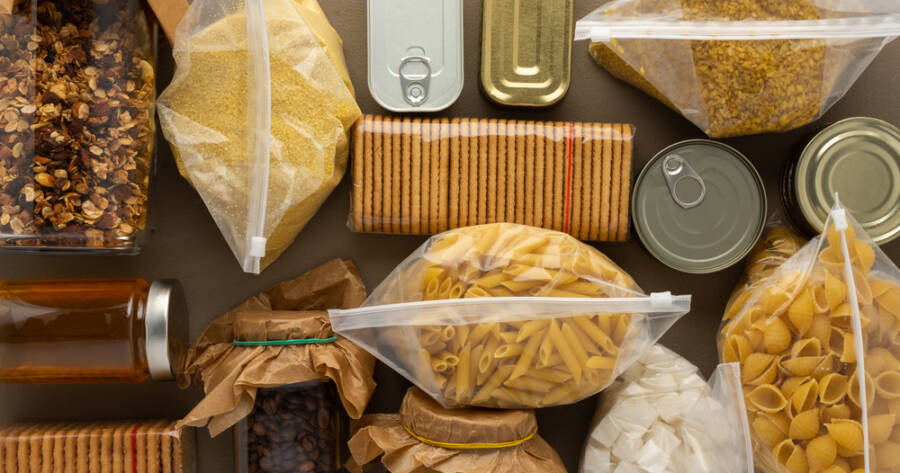Building a food stockpile for emergencies is a smart and practical way to ensure you and your family are prepared for unexpected events. Whether it’s a natural disaster, power outage, or economic disruption, having a well-stocked pantry can provide peace of mind. However, it’s important to approach food storage wisely to avoid overspending. Explore how to create an emergency food stockpile without breaking the bank.
Start with a Plan
The first step in building a food stockpile is creating a plan. Before rushing to buy items in bulk, take some time to assess your household’s needs. Consider how many people you’re stocking for and what types of food you typically eat. It’s essential to prioritize long-lasting, nutritious items that provide the most value.
Start by listing the foods you eat most often, focusing on canned goods, grains, dried foods, and frozen items that can be stored for extended periods. Include protein-rich foods, like canned beans, lentils, and tuna, as well as hearty vegetables, rice, pasta, and essential condiments.
Once you have a list, think about the storage space you have available. Check your pantry, closet, and freezer to see where you can store the items you plan to purchase. This will help you avoid overbuying and ensure your stockpile is organized and manageable.
Buy in Bulk Smartly
Buying in bulk is one of the best ways to save money when building a food stockpile. However, not all bulk purchases are equal. The key is to focus on non-perishable items that you’ll actually use. Buying large quantities of items that may expire before you can use them is not cost-effective.
Look for bulk purchases of staples like rice, pasta, oats, flour, and canned vegetables. These foods have long shelf lives and are versatile, making them perfect for emergency situations. To save even more, consider shopping at wholesale stores or warehouse clubs, where bulk prices are often lower than those at standard grocery stores.
Be cautious, however, about bulk purchases of perishable foods like dairy and fresh produce. These should only be included if you’re confident that you can use them before they spoil. If you find yourself with extra fresh produce, consider freezing it for long-term storage.
Take Advantage of Sales and Discounts
To save money on your food stockpile, keep an eye on sales, discounts, and special promotions. Many grocery stores offer discounts on certain items throughout the year, especially during seasonal changes or holiday periods. By planning your stockpile purchases around these sales, you can significantly reduce the overall cost.
Sign up for store loyalty programs to receive coupons, discounts, and access to exclusive offers. Couponing can be a powerful tool when building your stockpile. By matching sales with coupons, you can score deep discounts on essential items that you’ll need in an emergency. Many grocery stores also offer price-matching guarantees, allowing you to shop around for the best deals.
Focus on Nutrient-Dense Foods
When building a stockpile, it’s important to focus on foods that are not only long-lasting but also nutrient-dense. Aim for a balanced mix of carbohydrates, protein, and fats to ensure that you’re getting adequate nutrition in an emergency. The goal is to create a stockpile that will sustain you for an extended period while providing the necessary nutrients to keep your body strong and healthy.
Some great options for nutrient-dense foods include:
- Canned beans: Rich in protein and fiber, canned beans are an affordable and long-lasting pantry staple.
- Rice and quinoa: These grains provide carbohydrates and are great sources of energy.
- Canned vegetables: Packed with essential vitamins and minerals, canned vegetables can be a valuable addition to your stockpile.
- Nuts and seeds: High in healthy fats and protein, nuts and seeds are perfect for snacking and provide lasting energy.
- Dried fruits: A good source of vitamins, dried fruits can add variety and sweetness to your stockpile.
Additionally, consider storing powdered milk or shelf-stable plant-based milks as a dairy alternative. These options have long shelf lives and can be used for cooking or added to drinks.
Organize Your Stockpile
A well-organized stockpile is easier to manage and helps you avoid wasting food. Use shelves, bins, and labels to keep your pantry tidy and make it easy to see what you have. Rotate your stock regularly, using older items first to ensure nothing expires.
Consider categorizing your stockpile into groups, such as grains, canned goods, snacks, and beverages. This will allow you to track what you have on hand and make it simpler to plan meals during an emergency. Additionally, label your items with the purchase date to ensure you use them before their expiration dates.
Be Prepared Without Overspending
Building a food stockpile doesn’t have to break the bank. By making a plan, buying in bulk wisely, taking advantage of sales, and focusing on nutrient-dense foods, you can create an emergency stockpile that will keep you well-prepared without overspending.
Start small, gradually adding items to your pantry as you go, and remember that the key is to focus on quality, longevity, and practicality. A well-organized, well-planned stockpile will give you peace of mind during emergencies without unnecessary financial stress.

